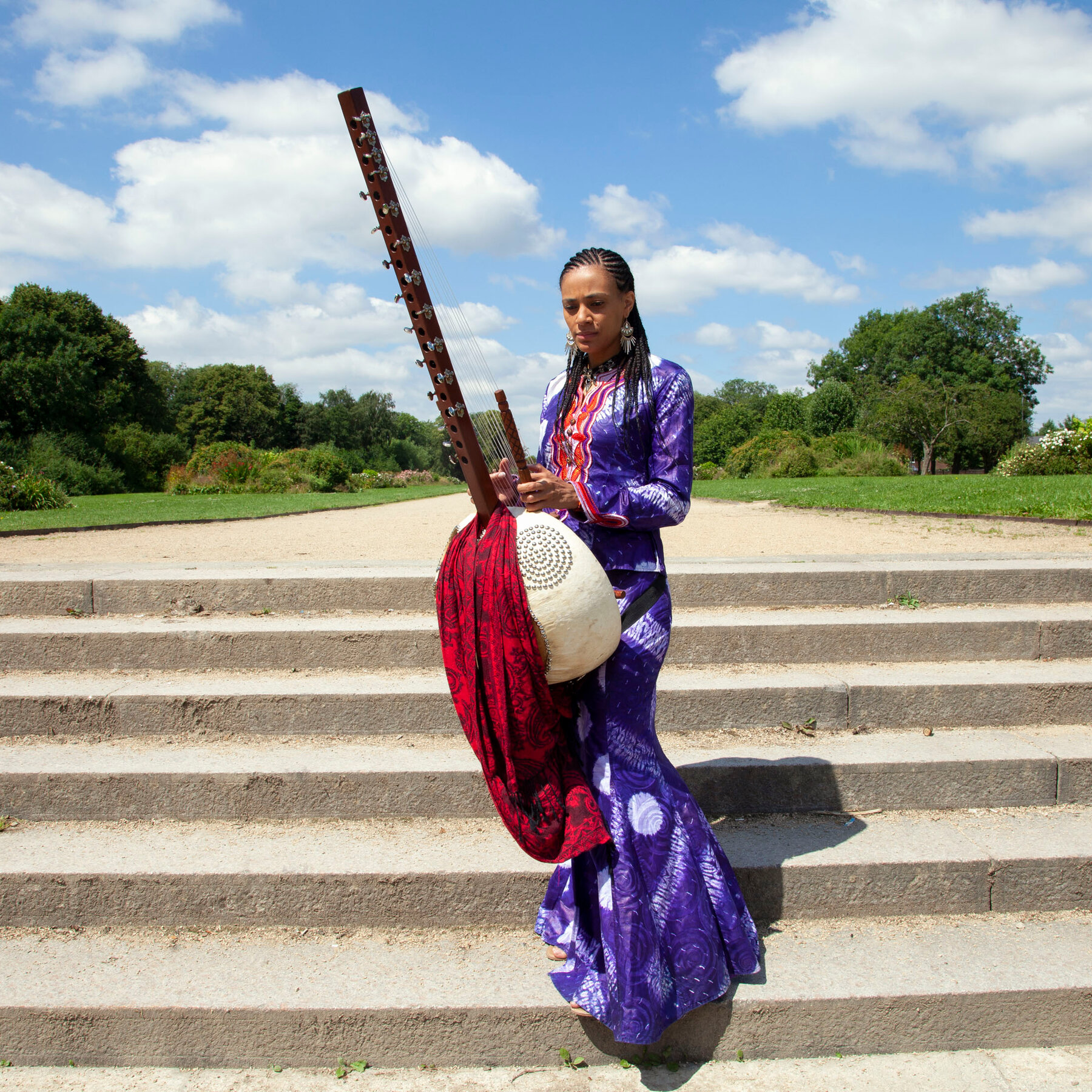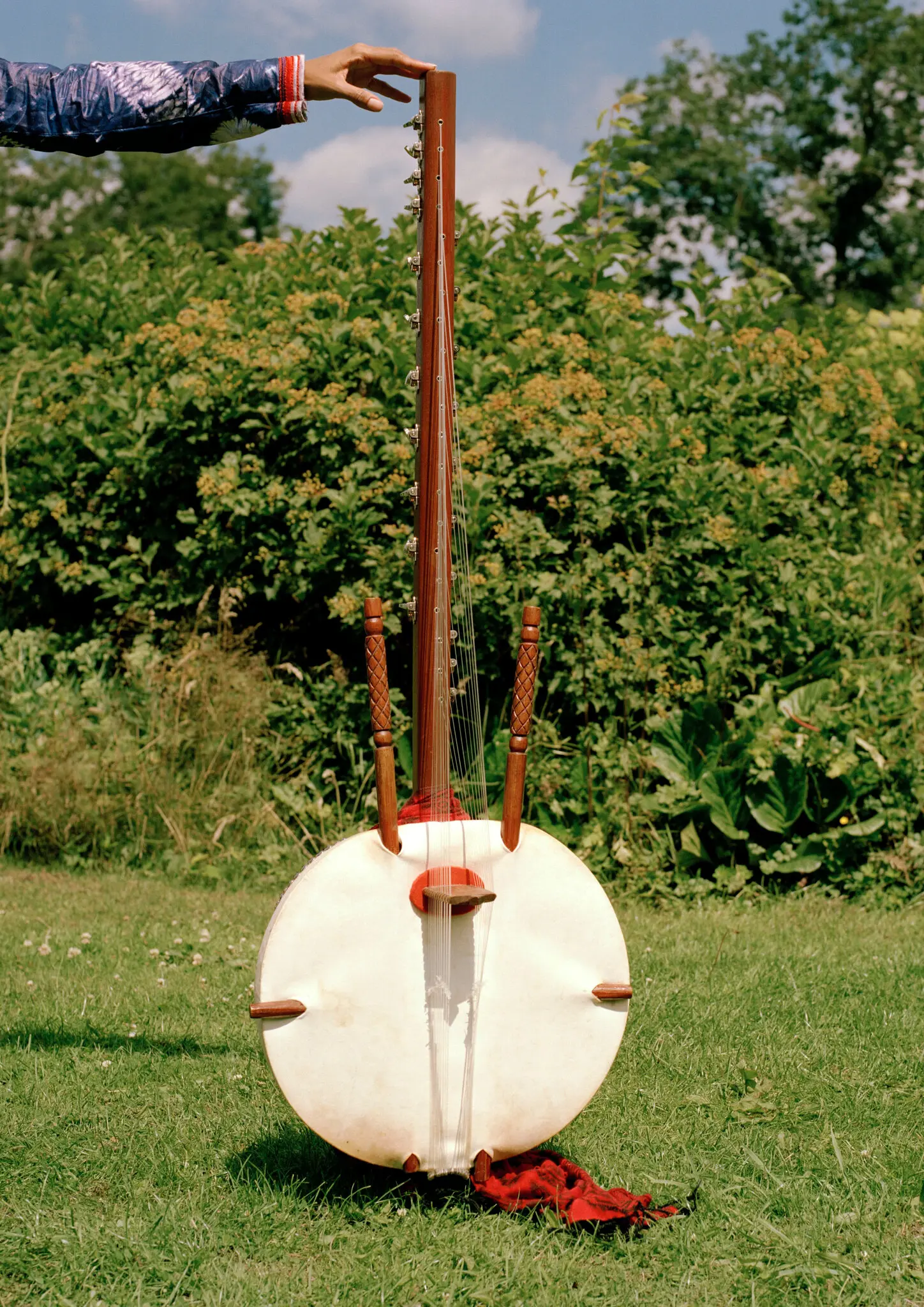The Mande people of West Africa, particularly in modern-day Mali, The Gambia , Guinea, and Senegal, have a deep-rooted tradition of oral history, music, and storytelling. One of the most significant instruments in this tradition is the kora, a revered 21-string harp-lute. Its origins are shrouded in both oral legend and historical accounts, making it a deeply symbolic instrument of the griot (jeli) tradition—the hereditary musicians and historians of the Mande world. While the legend provides a poetic explanation, historians trace the kora’s origins to around the 16th–18th century, particularly within the Kaabu Empire (an offshoot of the Mali Empire). The Kaabu Empire (1537–1867) played a key role in the kora’s spread, as it was a major cultural and musical center where griots thrived.
The Mali Empire (c. 1235–1600), under rulers like Sundiata Keita, relied heavily on griots to preserve history through music and poetry. Although the kora itself might have emerged later in Kaabu, it became the instrument of choice for griots when recounting the deeds of kings, warriors, and noble families. One of the most legendary griots of this era was Balla Fasséké Kouyaté, the official griot of Sundiata Keita. While he may not have played the kora (since it likely emerged later), his descendants, the Kouyaté family, are among the most respected kora players today.
Like the griots, the kora also has mythical origins. The region in which the kora originated is less debated. Widespread oral traditions attribute the origins of the kora to a specific place on the Gambian coast — a sacred well and a baobab tree that marks the spot, in a village call Sanementereng in The Gambia. Just as the bala (Mande xylophone) has origins in Mali in the 1200s, the kora has origins in the Kaabu federation of the Mandinka people in The Gambia in the 1700s. Traditionally, jelis have the exclusive right to play both of these instruments. All the narratives agree that the djinns (genie) created the kora.
Legend has it that Jali Mady Wuleng, who is better known as Sissoko, was the first player to discover the kora in a hidden village near the Gambia River. Bewitched by its pleasant sound, he set a trap for a djinn and succeeded in appropriating his instrument. This myth only compounds the mystery that surrounds the kora. Even today, many people agree that the kora is on loan to the griots from the djinns and the musician’s impassioned and irrational behaviour can be explained as a mark of the maleficent hold that these creatures still exercise on them. They believe that a great musician should therefore not display all of his virtuosity as he may one day experience the unfortunate consequences of this.
Unlike blues musicians who supposedly gain their talent through a Faustian bargain — contrasts with the deeply spiritual and ancestral connection that kora players have with their instrument. Mande kora players inherit their gift through bloodline and divine blessing. The belief that djinns (spiritual beings) influence their playing does not imply a pact of the soul but rather an otherworldly inspiration that enhances their mastery. For griots, the kora is more than an instrument—it is a sacred vessel of history, identity, and storytelling, with its power coming from ancestral guidance rather than dark forces. This mystical connection allows them to evoke deep emotions, preserve history, and bring healing through music.
The griots refined and popularized the kora, making it an essential tool for storytelling, praise singing, and preserving the history of the Mande people. The kora’s construction involves a large calabash gourd cut in half, covered with cowhide, and fitted with a wooden neck and is played with four fingers. It creates dazzling, dense musical textures as well as thin shimmering veneers that accompany the delivery of deep oral history. It is one of the most sophisticated handmade musical instruments in the world, both in its musical capabilities and the depth of its tradition.
Today, the kora remains a symbol of Mande peoples identity, played by legendary musicians like Toumani Diabaté, Ballaké Sissoko, Seckou Keita and Sona Jobarteh. By tradition, the playing of the kora is passed from father to son and Sona Jobarteh stands today among legends as the first female virtuoso in a centuries-old tradition passed down the male line. Born into a prominent griot family in The Gambia, she has broken barriers by mastering the kora. Despite its evolution, the instrument still holds a sacred place in the griot tradition, and its origins—both mythical and historical—reflect the deep spiritual and cultural roots of the Mande people.
Famous Kora-Playing Families (Griot Lineages)
In the Mande tradition, kora mastery is passed down through griot (jeli) families, who serve as historians, praise singers, and oral custodians of history. Some of the most renowned kora families include:
The Diabaté Family (Mali)
• One of the most famous kora dynasties.
• Sidiki Diabaté (1922–1996) – Known as the “King of the Kora,” he modernized the instrument and played a key role in bringing it to international audiences.
• Toumani Diabaté (b. 1965) – Grammy-winning kora master who blends traditional sounds with jazz, flamenco, and contemporary styles.
• Sidiki Diabaté (Jr.) (b. 1992) – Son of Toumani, a kora player and Afro-pop star merging kora with hip-hop.
The Sissoko Family (Mali and The Gambia)
• Another prestigious griot family known for their rich kora traditions.
• Djelimady Sissoko (d. 1981) – A master kora player from Mali who influenced generations.
• Ballaké Sissoko (b. 1968) – A globally recognized kora artist known for collaborations with cellist Vincent Segal and other international musicians.
The Kouyaté Family (Mali & Guinea)
• Descendants of Balla Fasséké Kouyaté, the first griot of the Mali Empire.
• Ba Cissoko (Guinea) – A contemporary kora player blending kora with reggae and funk influences.
The Konte Family (The Gambia)
• Pioneers of bringing the kora to Western audiences.
• Alhaji Bai Konte (1920s–1983, The Gambia) – One of the first kora players to tour internationally.
• Dembo Konte (b. 1942, The Gambia) – Continued his father’s legacy by recording fusion kora albums.
Famous Kora Compositions & Traditional Songs
The kora is often used to perform historical epics, praise songs, and spiritual pieces. Some of the most famous traditional compositions include:
“Kaira” (Peace)
• One of the most well-known kora pieces, played by many griots.
• Popularized by Sidiki Diabaté and later performed by Toumani Diabaté.
• A song of peace and reflection, often played during important ceremonies.
“Jarabi” (Passion/Love)
• A love song that speaks about deep longing and devotion.
• Often performed at weddings and family gatherings.
• Played by many great kora masters, including Toumani Diabaté and Ballaké Sissoko.
“Mali Sadio” (The Story of the Hippo)
• A classic griot tale about a woman and a mystical hippo in Mali.
• A song of remembrance, played at royal courts and gatherings.
“Allah L’a Ke” (God Has Done It)
• A spiritual and praise song honoring blessings and divine fate.
• Performed in both Islamic and griot ceremonies.
Join us in our next Friday Newsletter as we honor legendary kora masters of the Mande people. This timeless instrument, passed down through generations, stands as a testament to the rich hereditary tradition of Mande griots. A gift of history, storytelling, and mastery—uniquely Mande.




